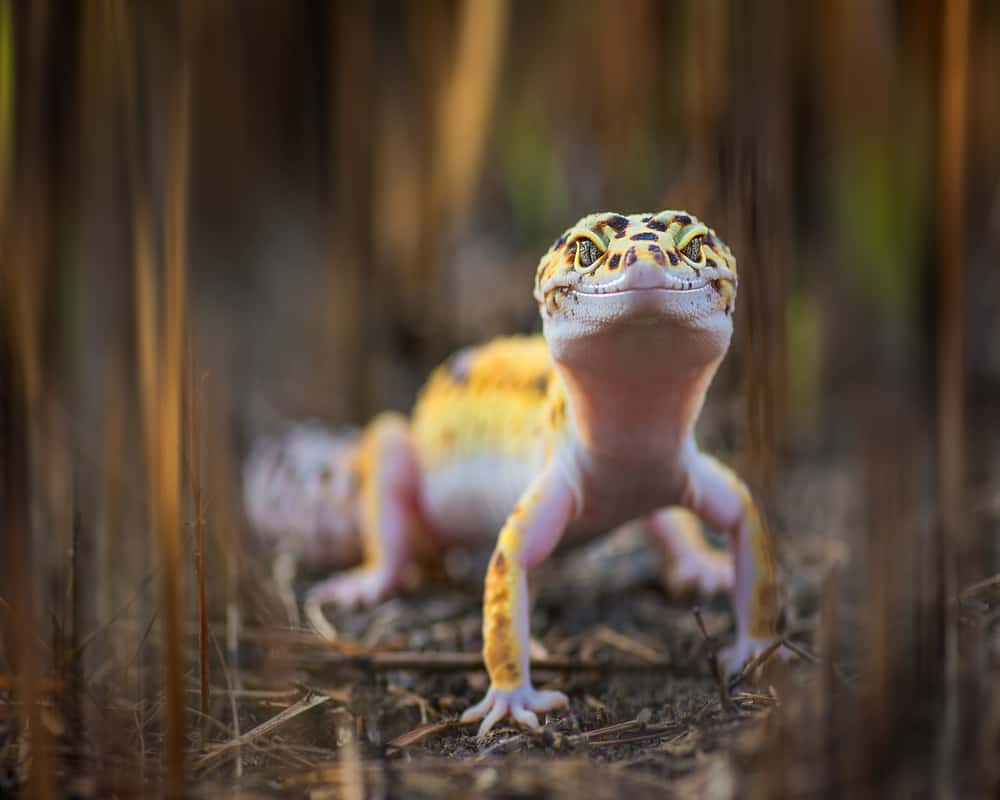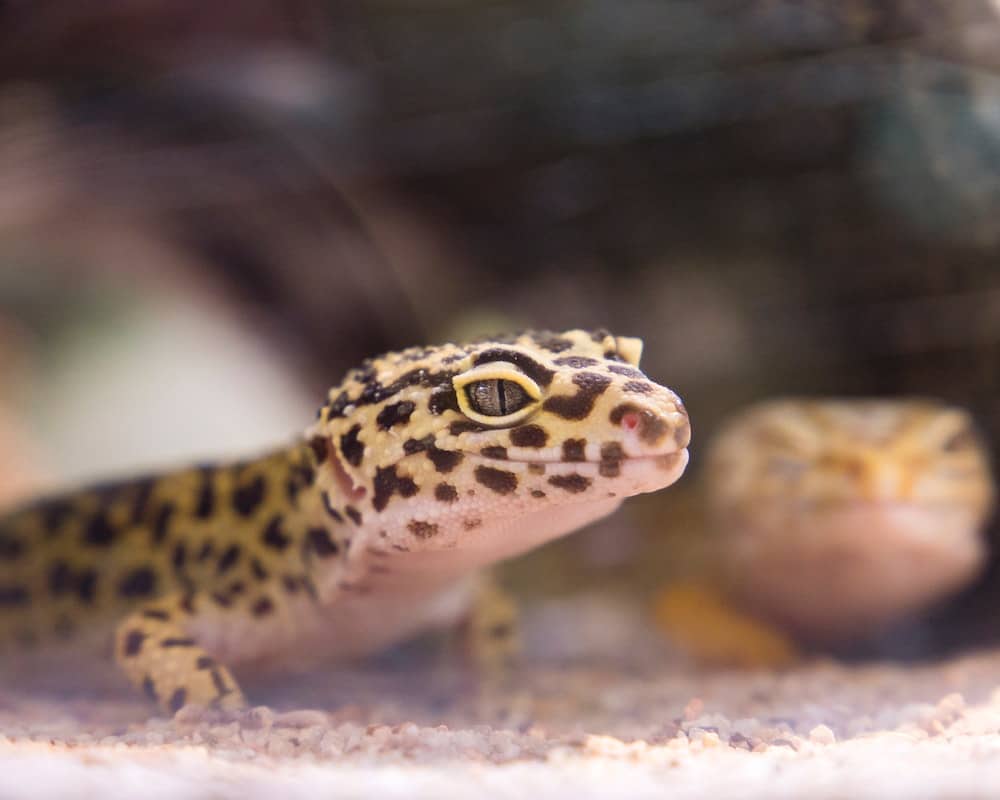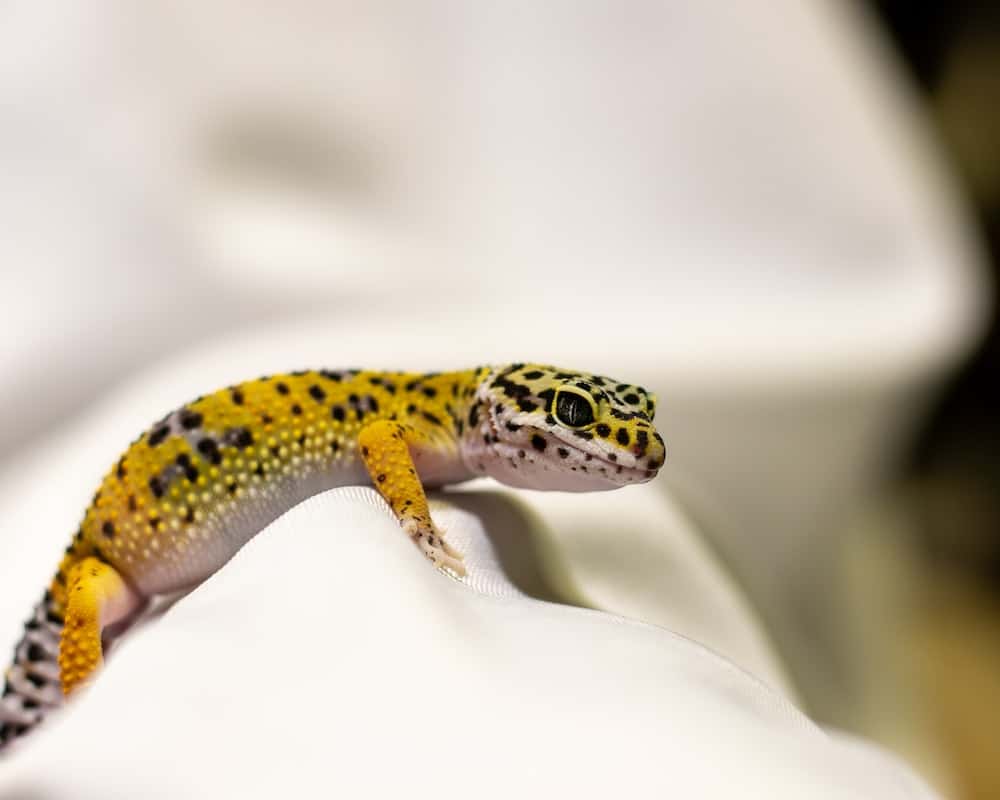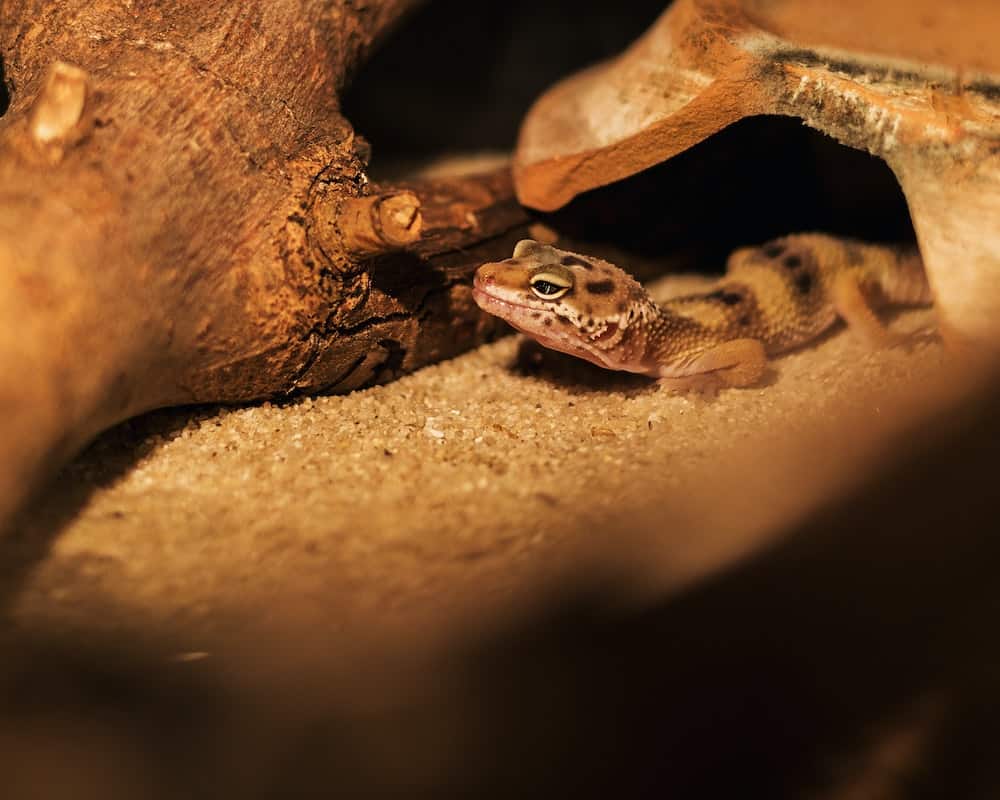Have you been wondering about trying out new food items as feeding options for your pet leopard gecko’s diet? Are you considering feeding wax worms to your pet leopard gecko? Do leopard geckos eat wax worms?
Leopard geckos do eat wax worms. They like feeding on wax worms and enjoy eating them very much. However, wax worms should not be fed daily to your pet leopard gecko due to their high-fat content.
Are you eager to learn why leopard geckos like eating wax worms and how often you should feed wax worms to your pet leopard gecko? Well, keep reading to know more…
What is a Wax Worm?
A wax worm is a larval form of the greater wax moth (Galleria mellonella). Usually yellowish white, with a brownish-black head, a wax worm has a lot of tiny black feet.
It is commonly used as a live feed source for various pets like leopard geckos and other reptilian pets. It is rich in fat and moisture, making it a delicious treat for leopard geckos.
Wax worms are preferred by reptile pet owners as wax worms are low-maintenance. They are easy to store and do not need to be fed at the point before they are used as food.
Nutritional Value of Wax Worms
Wax worms lack the nutritional value which other live insects like crickets have. This is because they have extremely high-fat content.
Despite the high-fat content, wax worms also have protein, fiber, and moisture content. They also have nutrients like phosphorus, magnesium, potassium, and sodium.
However, they completely lack vitamins like Vitamin A and Vitamin D3. You will also not find any calcium and iodine in wax worms.
Will My Leopard Gecko Enjoy Eating Wax Worms?
Since wax worms are calorie-dense and have good moisture content, your pet leopard gecko will definitely enjoy eating wax worms.
Leopard geckos are insectivores which means that they feed only on insects. You cannot feed anything else like fruits or vegetables to them.
Although you need to be careful about feeding your pet wax worms, they are juicy and have a high amount of fat, which can make your pet leopard gecko want to feed only on them.
Consider wax worms as the junk food of the insect world.
Reasons Why Wax Worms Are Good For Your Pet Leopard Gecko
Despite being calorie-dense, wax worms are good for your pet leopard gecko. You must rather feed your pet leopard gecko from time to time with wax worms for the following reasons:
- To Stimulate Your Pet’s Appetite
If your pet leopard gecko has been sick and has been avoiding food, you can turn to wax worms to tempt it to eat something.
Wax worms are juicy and palatable due to their moisture and fat content. Fat consumption releases dopamine in your pet’s brain, which is a reward signal for eating.
Due to the dopamine release, your pet will perceive eating as rewarding and quickly get an appetite.
- To Help Your Pet Put On Weight
In case your pet leopard gecko is underweight due to some illness or simply because it has lost its appetite over the days, wax worms can come to your rescue.
The delicious juicy nature of worms will make your pet leopard gecko want to eat them, and the high-fat content of the wax worms will ensure that your pet leopard gecko will put on the right weight quickly.
However, for your pet leopard gecko to become healthy, only adding weight is not the only criteria. It needs to have the right nutrients as well in its diet. For this, you must ensure that you dust the wax worms with vital nutrients and supplements before feeding them to your leopard gecko.
- To Reward your pet leopard gecko
One of the best times to give your pet leopard gecko any wax worms is as an occasional treat or a reward while training it.
If you use wax worms to reward your pet leopard gecko after handling it, your pet leopard gecko will start liking you and be more comfortable around you the next time you handle it.
Remember to use wax worms only for these reasons and not as a part of a regular diet, or else the value of the treat will be lost.
Check out the excitement of this leopard gecko while eating a wax worm in this video!
Top 4 Reasons Why Wax Worms Are Bad For Your Pet Leopard Gecko
If you end up feeding your pet leopard gecko only on wax worms, it can cause the following harm to your leopard gecko:
- Complications Due to Weight Gain
Since wax worms are high in fat content, feeding your pet leopard gecko with wax worms too often can lead to weight gain or obesity, leading to many physical complications.
Excessive weight can cause fatty liver disorder. Fatty liver disorder is a severe problem where the liver breaks down. This can be catastrophic to your pet leopard gecko.
- Metabolic Bone Disease
Since wax worms do not contain any vital nutrients like vitamin D3 and calcium but contain phosphorus, too much consumption of wax worms can lead to metabolic bone disease in leopard geckos.
The ideal ratio of consumption of calcium and phosphorus is 2:1. That is, for every two units of calcium, your pet leopard gecko should eat 1 unit of phosphorus.
If your pet leopard gecko’s diet contains too many wax worms, the calcium-to-phosphorus ratio will be disrupted. To meet its calcium needs, your pet will start drawing calcium from its bones, eventually weakening them.
This can lead to metabolic bone disease and, if untreated, can also lead to the death of your pet leopard gecko.
- Addiction to Wax Worms
The fat and juiciness of the wax worms can get your pet leopard gecko hooked to eating wax worms. They are so delicious that your pet may even end up refusing other dietary insects which are healthy for it.
It is best to use wax worms sparingly so that your pet does not get addicted to wax worms.
- Insufficient Nutrition
Lastly, wax worms are devoid of many nutrients which are essential for your pet leopard gecko’s health. If you end up feeding wax worms often and on a regular basis, your pet may not get its nutrition from the diet.
It is ideal for keeping your pet leopard gecko on a healthy diet of varied insects like crickets, dubia roaches, and mealworms, and use wax worms only as treats.
How Often Should I Feed Wax Worms to My Leopard Gecko?
Wax worms are something your pet leopard gecko will enjoy eating. However, it is crucial that you do not make it a staple diet of your pet leopard gecko.
The best frequency to provide wax worms to your pet leopard gecko is once a week or every other week. You can also use it to be used as a treat as long as it is not done on a daily basis.
Conclusion
Though your pet leopard gecko can eat wax worms and enjoy them tremendously, it is not advisable to provide your pet with wax worms on a regular basis.
When it comes to the health of your pet leopard gecko, a diet consisting of various gut-loaded and nutrient-rich insects is advisable.
FAQS
Can Baby and Juvenile Leopard Geckos Eat Wax Worms?
Yes, baby and juvenile leopard geckos are able to eat wax worms. However, it is advisable not to feed them wax worms. Younger leopard geckos need more protein, calcium, and other vital nutrients for their growth.
Since wax worms lack essential nutrients, your baby leopard geckos will be deprived of these nutrients. Also, since wax worms are addictive, your young leopard gecko may become picky about other food items and avoid eating other insects altogether.
The best time to introduce wax worms to your pet is when it is 18 months old at least.
What Should I Do If My Leopard Gecko Eats Only Wax Worms?
If your pet leopard gecko is addicted to wax worms, you need to stop offering wax worms entirely. Remember, this is only a behavioral addiction and will not impact them biologically.
Instead, you can start by offering them a variety of other insects in food, like crickets and mealworms. Your pet leopard gecko may not eat these food items for a few days, but eventually, your pet leopard gecko will get back to eating a healthy diet.
How Can I Make Wax Worms Healthier?
You can dust the wax worms with a calcium supplement to compensate for the lack of calcium. However, you need not bother dusting or gut-loading waxworms as they will use them only sparingly and once a week due to their high-fat content.
What Are the Signs My Leopard Gecko Is Getting Obese?
Some visible signs that your pet leopard gecko is getting obese are fat bubbles in the armpits and fat rolls on the belly. You may also notice that your pet has a slow, wobbly walk due to obesity.
If your pet leopard gecko shows these signs, you need to immediately stop feeding your pet with wax worms to avoid any further complications.




